I am passionate about becoming a “connoisseur of the sky.” From all things adrenaline, aviation, and yes, even astronomy, my visit to the Arizona Science Center to check out the new Astronaut Exhibition was the perfect opportunity to continue my curiosity for celestial spaces.
From the moment I arrived, I felt a sense of calm. (The last time I visited, pre-pandemic, there were dozens of people scuffling in the corridors and crowding the exhibits. It was hard to soak in the displays—some patrons feeling disgruntled and disappointed by not being able to take everything in on their visit). However, not this time. Through mitigation and strategy, The Arizona Science Center has taken its foibles during the shutdown and streamlined its practices. The Center has thoughtfully executed and implemented steps for a grand reopening that ensures a safe and pleasant experience for Guests. Upon arrival, patrons are warmly greeted by a security guard and offered hand sanitizer. There are a plethora of sanitizing stations throughout the Center’s massive 200,000 sf. building. Though capacity allows for 5,000 people, due to limited daily attendance, advanced reservations are required. Up to 40 people can enter the building every 15 minutes. This, coupled with proper mask-wearing, allows for appropriate social distancing and helps patrons not to feel rushed during their experience.
The reimagining of the AZ Science Center’s role during the pandemic has allowed them to create and launch the learning platform CONNECT, “an interactive digital science subscription offering students, parents and educators an engaging virtual approach to science learning. Built to meet or exceed the state of Arizona’s Science Standards, CONNECT provides thought-provoking science projects, lessons, and demonstrations created to inspire and empower curious future scientists.”
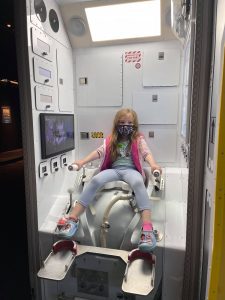
Did you ever dream of going to space camp as a kid? I did. The new Astronaut Exhibition whets one’s extragalactic appetite; beckoning one to explore the limitless cosmos. Its 25+ interactions allowed me to get reacquainted with the particulars of becoming an astronaut. I re-familiarized myself with space jargon and the meanings of inertia, gravity, g-force, gyromagnetic, linear momentum, speed difference, and slow impact. I learned about the cause and effect of microgravity, bodily and cerebral connections, dedication, and the role teamwork and technology play in a successful mission. I observed a rocket launch simulator, experienced a G-force trainer with centrifugal force (similar to Disney’s Mad Tea Party ride, it allows kids and adults to spin in a space capsule to see how many G-forces they can create. I created 1.78gs on my turn). Chris Hadfield, the first Canadian to walk in space and first former Commander of International Space Station, as well as other astronauts can be seen in video clips teaching about Space Lab gardens, sleep quarters, space food, how to wash your hair, shave your head, and use a toilet in space. (Interesting facts: astronauts on the Apollo used a fecal bag instead of a toilet. Now “Lunar Loos” use thigh restraints to keep astronauts from floating away. Moreover, clothes don’t get washed in space. Shirts are worn for a month and socks for a week and then thrown away).
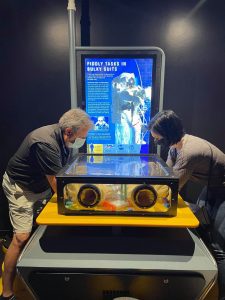 During my visit, I also observed many more female visitors. Jennifer Brown, 39, and a patron from Tennessee was trying a hands-on activity where she wore bulky space gloves likened to an EVA space suit to try to fix nuts and bolts. She said she “loves all things space. I love that my 7–year–old daughter has the opportunity to look at space and see female role models and that possibilities are endless. Plus, I am interested in metaphysics— so much is unknown, yet to be explored. It’s fascinating.”
During my visit, I also observed many more female visitors. Jennifer Brown, 39, and a patron from Tennessee was trying a hands-on activity where she wore bulky space gloves likened to an EVA space suit to try to fix nuts and bolts. She said she “loves all things space. I love that my 7–year–old daughter has the opportunity to look at space and see female role models and that possibilities are endless. Plus, I am interested in metaphysics— so much is unknown, yet to be explored. It’s fascinating.”
I also viewed a film called: Astronaut: Ocean to Orbit, a look at how NASA uses simulated, underwater environments on Earth to help astronauts train for their time in space. I also attended the Dorrance Planetarium’s Arizona Skies: Winter which provides a 360-degree immersive look at our brilliant night sky and a visual commentary of our breathtaking constellations.
Whether you are a “connoisseur of the sky” or interested in learning about all things space, I encourage you to check out this awesome opportunity. Arizona Science Center is open 6 days a week, Wednesday — Monday, and closed on Tuesdays for deep cleaning. Daily hours of operation are 10:30 a.m. to 4:00 p.m. with the last entry at 2:45 p.m. The Astronaut Exhibition runs through May 31, 2021.

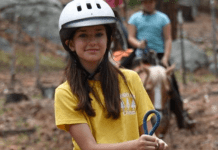
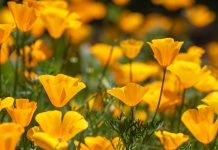


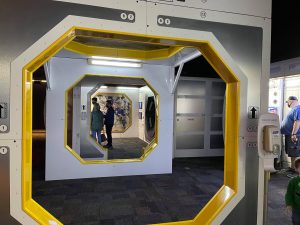


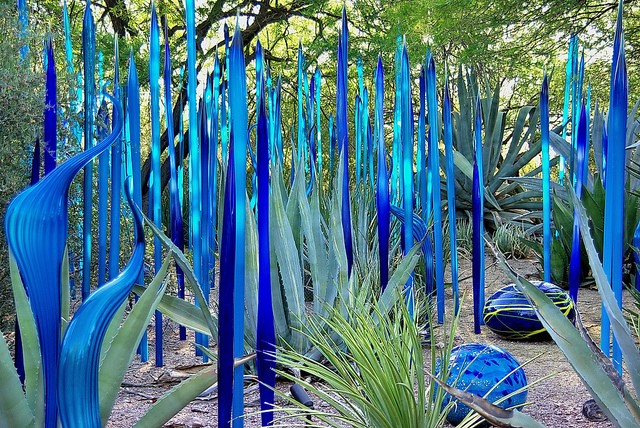
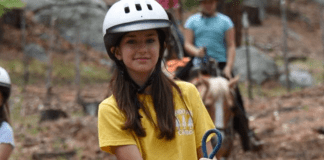




Thank you for sharing about your time at the Science Museum! Sounds super fun.
I always wanted to go to space camp as a kid! What a great exhibit!